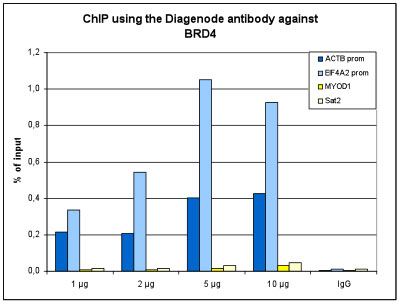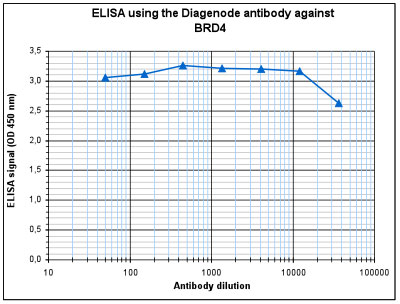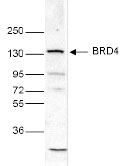BRD4 (UniProt/Swiss-Prot entry O60885) is a chromatin reader protein that binds acetylated histones. It remains associated with acetylated chromatin throughout the entire cell cycle and provides epigenetic memory for gene transcription by preserving an acetylated chromatin status. As such, it plays a key role in the transmission of epigenetic memory across cell divisions. BRD4 promotes phosphorylation of Ser-2 of the C-terminal domain (CTD) of RNA polymerase II and plays a key role in regulating the transcription of signal-inducible genes. It has been implicated in a translocation of chromosome 19 which causes an upper respiratory tract carcinoma.








